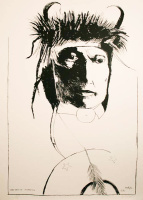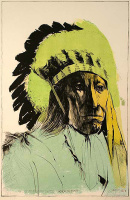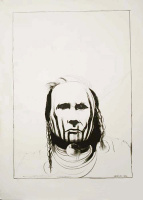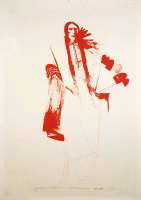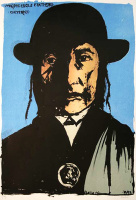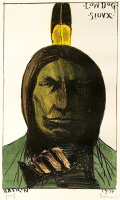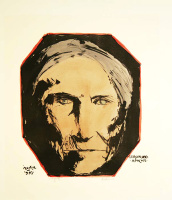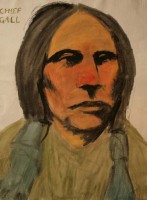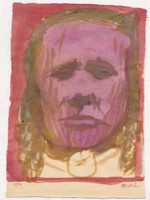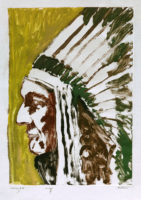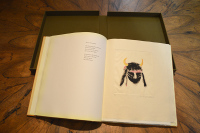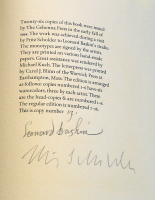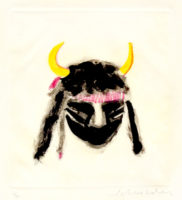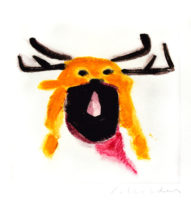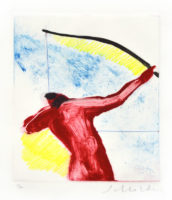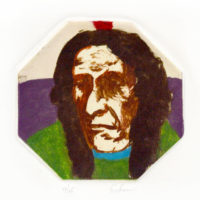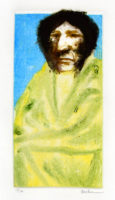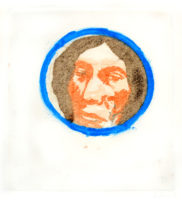Leonard Baskin: Native Americans
Leonard Baskin’s interest in nineteenth century Native Americans was roused into acute attendance from ignorant indifference, when the National Park Service asked him to provide illustrations for the handbook that described the then called “Custer National Park”, now called “Little Big-Horn National Park”. Baskin’s detestation of Custer was as near instantaneous as was his respect for the people of the Sioux. From Hollywood’s distortions, clichés and prevalent bad slogans of the time, Baskin’s insight into the vast, resolute, and wanton, destruction of our native populace was matched by his deepening regard for the wisdom and courage of the Sioux and other Indian Chieftains.
In his two series of lithographs of diverse Nineteenth Century Native Americans, Baskin indubitably suggests his profound and ongoing interest in such monumental heroes as Crazy Horse , Red Cloud, and Chief Gaul. In these series of lithographs, he has captured the sense of loss and betrayal felt by these people, as well as the despairing and aloof dignity of the nineteenth century chiefs.
1972 – 1975
33×19.5 in
31×21 in
37×24 in
36×24 in
33×23 in
34.5×24.5 in
33×21.25 in
33.5×24.5 in
24.5×34.25 in
24×33.5 in
34×24 in
34×24 in
34×24 in
34×18 in
34×18 in
25.5×34 in
27.5×34 in
25×36.5 in
31×22 in
31×22 in
Hand-Colored Proofs
32×22 in
34×24 in
1993
42×30 in
42×30 in
42×30 in
15×11 in
31×25 in
22×15 in
25×23 in
Hand-Colored Proofs
15×11 in
22×9 in
Watercolors
31×23.5 in
30×22 in
9.75×7 in
9.75×6.75 in
Monotypes
11.75×8.75 in
15.5×11.75 in
A Book of Plains Indians
Words and Monotypes by Fritz Scholder and Leonard Baskin
Published by the Gehenna Press in 1994
6.75×6 in
6.75×6 in
6.75×5.75 in
6.75×5.75 in
7×6.75 in
6.75×5.75 in
6.75×5.75 in
3.5×3.5 in
5.75×2.75 in
6.75×6 in
6.75×5.75 in
6.75×5.75 in
6.5×5.5 in
6.75×5.75 in

